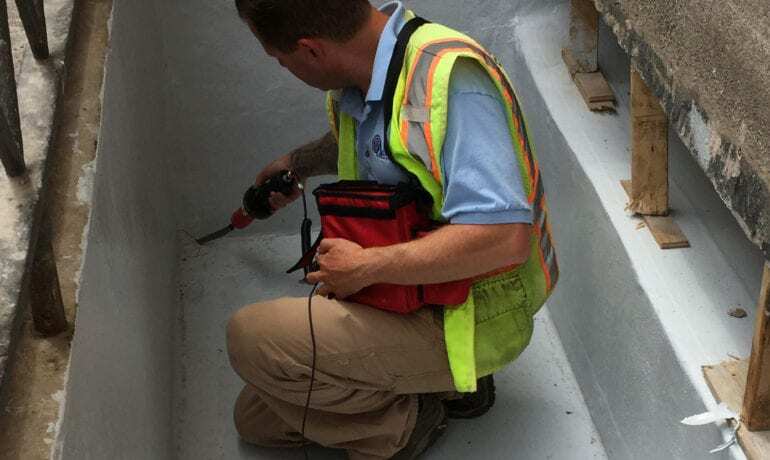Your building’s roof constantly fights to keep water from rain and melting snow out of the interior. It’s a critical part of protecting your property and anyone inside your building, but it’s also subject to damage and leaking after constant exposure to the elements. Roof damage can be particularly difficult to pinpoint, but doing so is critical for cost-effective repairs.
Below, we’re going to discuss low-voltage leak detection, when it’s useful, and why it could be the best roof testing solution for your building.
What Is Low-Voltage Leak Detection?
Low-voltage leak detection is a method of roof testing that uses electrical readings to pinpoint roof damage. The flat roof is covered with a thin layer of water, a ground wire is anchored to a convenient portion of the building, and charged probes are passed through the water layer.
Any leak in your roof, however small, will allow water into your building material, which will create a pathway for the electrical impulses to travel between the probes and the ground. Voltage differentials are picked up as the roof is scanned and can then be interpreted to determine the exact location of roof leaks.
When Is It Used?
This kind of testing is used for flat roofs suspected to be leaking and as a precautionary testing method to determine if roof leaks are present. It’s useful for all types of flat roofs, and it uses a fraction of the water that flood testing uses, so there is little chance of increased hydrostatic pressure damaging the roof’s insulation and drainage system along with highly accurate findings.
Benefits of Low-Voltage Leak Detection
Many building owners turn to low-voltage solutions for a variety of reasons. As mentioned above, it is unlikely to cause damage to your building like flood testing can, given the small amount of water needed. It also won’t force water through your roof to your building’s interior like flood testing does.
Additionally, low-voltage testing can provide a very accurate mapping of any areas of your roof that may be leaking. You can use it to pinpoint damage and avoid having to carry out major repairs or full roof replacements.
Low-voltage testing is a non-invasive and affordable way to get accurate readings of areas of your roof that may be leaking. It can help you minimize repair costs, determine if replacement is necessary, and give you peace of mind knowing that you’ve repaired even the smallest of leaks. Contact one of our highly trained technicians when you’re ready to implement low-voltage testing on your building.

